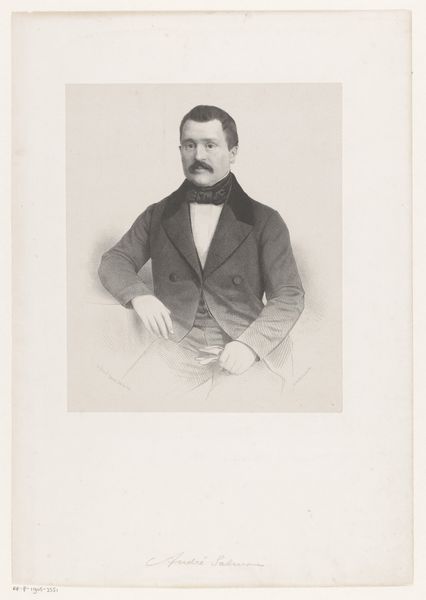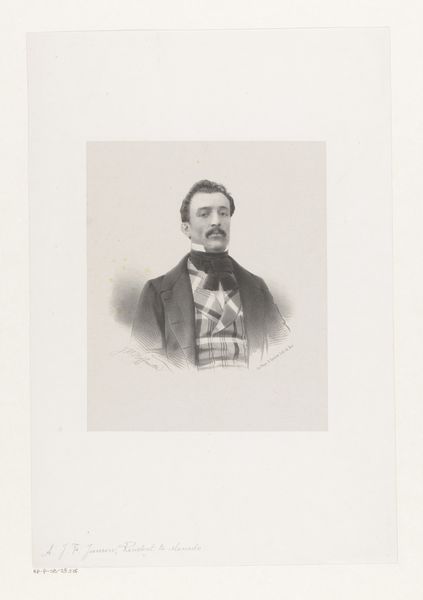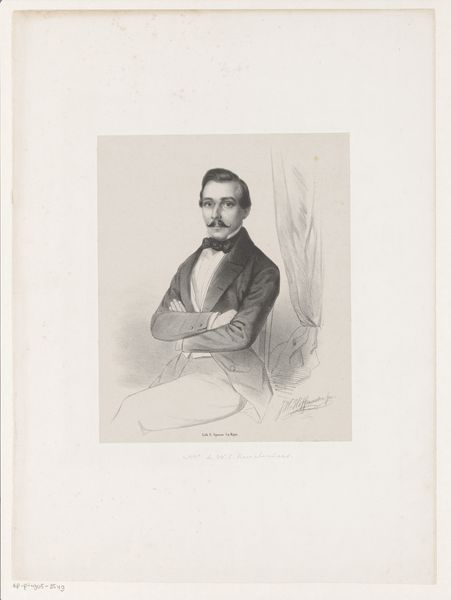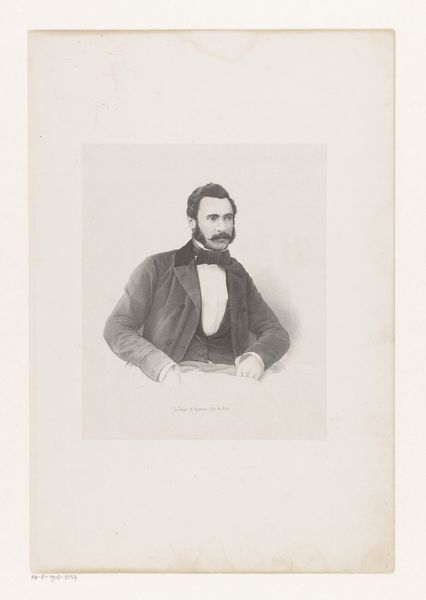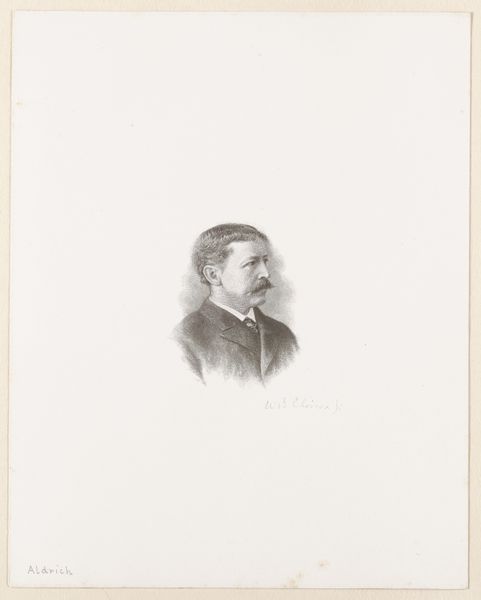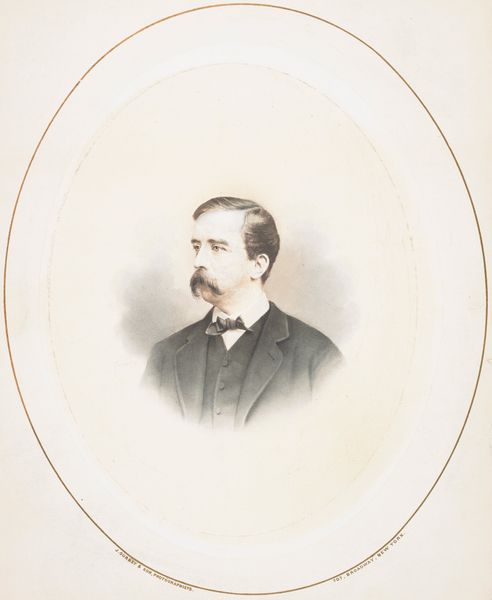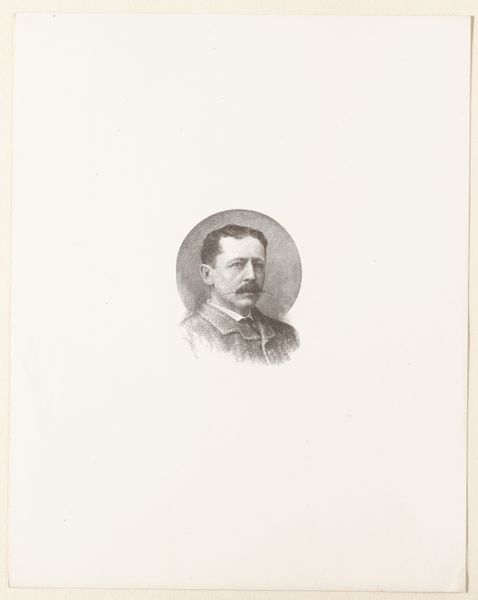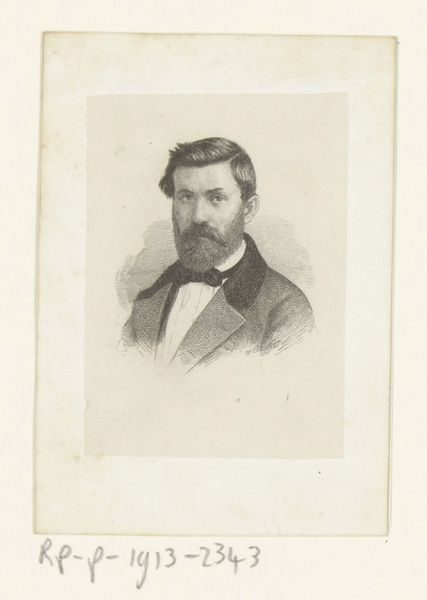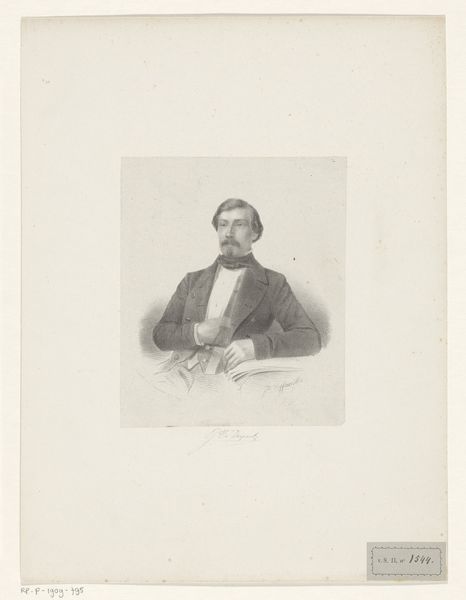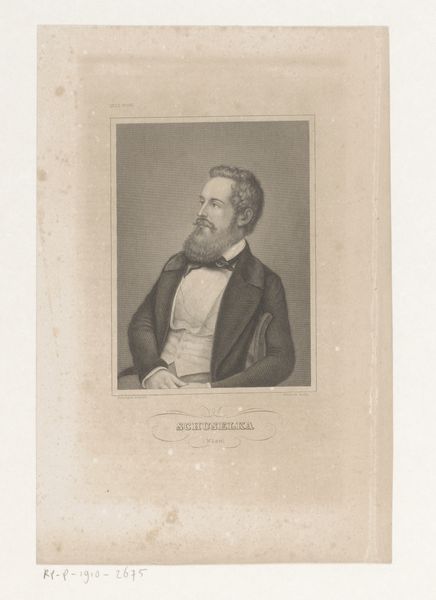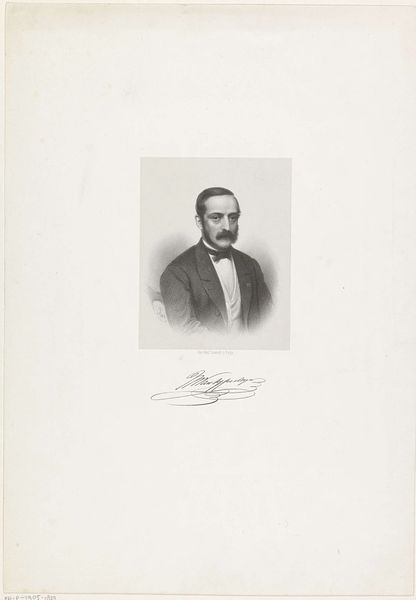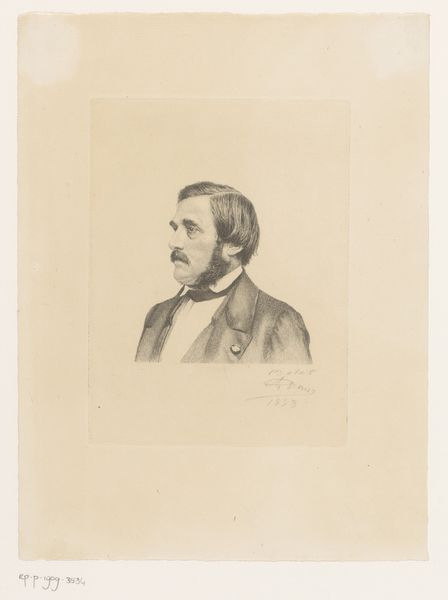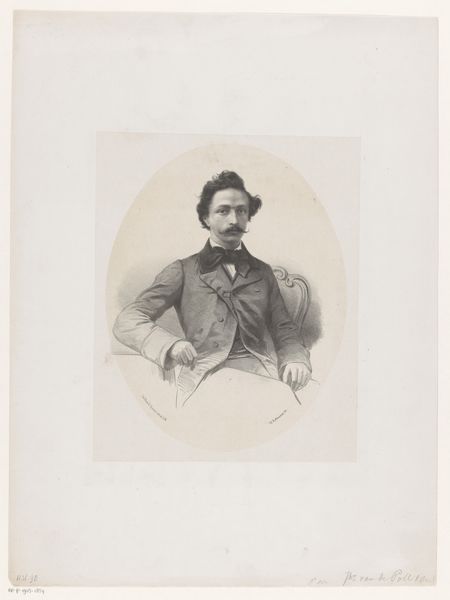
drawing, pencil, graphite
#
portrait
#
drawing
#
light pencil work
#
pencil
#
graphite
#
history-painting
#
realism
Dimensions: height 185 mm, width 134 mm
Copyright: Rijks Museum: Open Domain
Curator: Here we have a portrait, crafted sometime between 1831 and 1900, entitled "Portret van Ernest-Adolphe-François Quetelet". Editor: The precision is immediately striking. Look at that masterful rendering of light and shadow solely through graphite! It imparts such a thoughtful, almost melancholic mood. Curator: Indeed. It’s quite skilled light pencil work. The subject, Quetelet, was a significant figure; a Belgian statistician and sociologist. Consider how the act of portraying him, of choosing to immortalize him in graphite, speaks to the evolving role of science and data in society. Editor: Semiotically speaking, every choice reflects intentionality. The severity of the portrait conveys a sense of the subject's authority and importance. Notice how the tight lines around the face sharply contrast with the more gestural depiction of the clothing? Curator: Right, but consider the materiality. The graphite, a readily available medium, allowed for wider accessibility of portraits, diverging from oil paintings, usually the domain of the upper classes. Editor: Agreed. And what a captivating use of the medium! Notice how Meunier modulates the pressure of the graphite, building form and volume gradually? The values range from pale greys to nearly solid blacks, which maximizes tonal range. Curator: This wasn't mere artistic fancy; there was labor and intent. Realism here is tied to making his scientific method more believable, accessible to a growing educated class. It's a visual claim to truth. Editor: Perhaps. However, let's also look at it simply as the translation of form and structure onto paper. Notice, in particular, how the soft blending around the cheekbones gives volume to his face. The very composition dictates where we look first and then, subsequently, what meaning we ascribe to it. Curator: I see it slightly differently, recognizing how portraits like these began circulating widely due to printmaking, playing an essential role in cultivating the modern "celebrity" scientist. Editor: It's a compelling image, analyzed from whatever viewpoint. Curator: Indeed, I will think of this art piece as the intersection between individual agency, data accessibility, and material constraints.
Comments
No comments
Be the first to comment and join the conversation on the ultimate creative platform.
